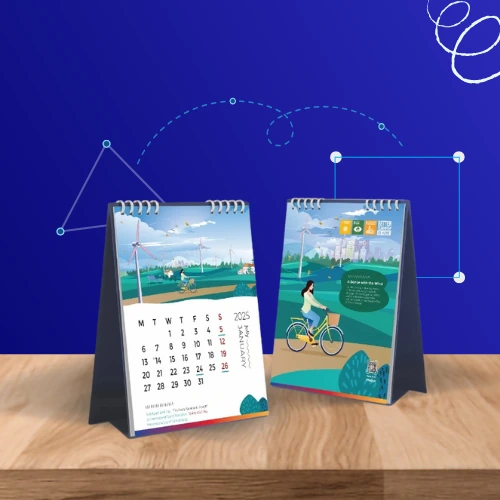Materiality in ESG or ESG Materiality Assessment is critical for unlocking business success.
In simple terms, what does ‘materiality’ or materiality assessment actually mean? Or what is materiality assessment in ESG?
Find out what ESG issues matter most to your business. Then, concentrate on those areas for the best short, medium and long-term results.
It’s like using ESG to manage your business risks, boost your reputation, attract talent, save money, and grow!”
ESG, which stands for environmental, social, and governance, is a framework that helps stakeholders understand how your organisation manages risks and opportunities related to sustainability issues.
ESG can help you improve your reputation, attract and retain talent, reduce costs, increase revenues, and enhance long-term value creation.
But how do you know what ESG issues are relevant to your business and stakeholders?
How do you prioritise them and report on them transparently and credibly? This is where materiality comes in.
Materiality in ESG, refers to the business importance, financial significance, and stakeholder value of a specific ESG topic.
Materiality helps you identify and focus on the ESG issues that matter most to your business performance and stakeholder expectations.
Why is ESG Materiality Assessment important for business?
The materiality principle is important for several reasons.
First, it helps companies focus their ESG efforts on the issues that matter most.
This can help them improve their ESG performance and reduce their risk.
Second, it helps companies communicate their ESG performance to their stakeholders clearly and concisely.
This can help them build trust and credibility with their stakeholders.
Third, it can help companies identify and mitigate ESG risks.
By understanding the material ESG issues they face, companies can reduce their exposure to these risks.
How to Conduct a Materiality Assessment
A materiality assessment is a tool to identify and prioritise the most critical ESG issues for your organisation and its stakeholders. It involves the following steps:
- Identify the potential ESG issues that could affect your business or your stakeholders. You can use various sources of information, such as industry standards, peer benchmarks, media analysis, stakeholder surveys, or expert interviews.
- Assess the impact of each ESG issue on your business and your stakeholders. You can use quantitative or qualitative methods, such as financial analysis, ESG risk assessment, stakeholder feedback, or ratings and rankings.
- Plot the ESG issues on a materiality matrix, where the x-axis represents the impact on your business (how important it is to you) and the y-axis represents the impact on your stakeholders (how important it is to them). The issues in the top-right quadrant are the most material ones, meaning they have a high impact on both your business and your stakeholders.
- Validate and review the materiality matrix with your internal and external stakeholders, such as senior management, board members, investors, customers, employees, suppliers, regulators, or NGOs. You can gather their input and feedback from workshops, consultations, or surveys.
- Use the materiality matrix to inform your ESG strategy, goals, actions, indicators, and finally ESG reporting. You can also update the materiality matrix periodically to reflect changes in your business context or stakeholder expectations.
Benefits of ESG Materiality Assessments
A materiality assessment can help you:
- Align your ESG Policy and ESG strategy with your business strategy and stakeholder expectations
- Focus your resources and efforts on the most relevant and impactful ESG issues
- Enhance your credibility and transparency with your stakeholders
- Demonstrate your leadership and commitment to sustainability
- Improve your ESG performance and disclosure
Examples of Materiality in ESG
Many leading companies have conducted materiality assessments to guide their ESG strategy and reporting. Here are some examples:
Microsoft uses a double materiality approach to assess its ESG issues from both an enterprise value perspective and an impact perspective.
Microsoft’s prioritisation across ESG topics includes a wide range of strategic planning processes by their senior management and many others across the enterprise. This includes stakeholder input and careful consideration of the impacts of their core businesses as they evolve.
Their Board of Directors also provides insights, feedback, and oversight across a broad range of environmental and social matters.
They also use third-party ESG consulting firms to support this process.
Unilever uses a comprehensive process to identify its material issues based on stakeholder input, external trends, internal priorities, and expert opinions.
A total of 191 issues have been identified and grouped into 38 topics. Unilever’s Materiality Matrix reflects how they have prioritised them. They have classified these topics into the following Focus Areas.
- Improving Health and well-being
- Reducing Environmental Impact
- Enhancing Livelihoods
These encompass the three Big Goals of the Unilever Sustainable Living Plan; Responsible Business Practices and Wider Sustainability Topics include topics that are not explicitly part of their Plan, but which are relevant to their commitments as a responsible business.
Nestlé systematically identifies its material issues based on stakeholder engagement, global frameworks, industry benchmarks, media analysis, and internal data.
They conduct a formal materiality assessment every other year to prioritize issues with the greatest impact on their business, communities, and the environment, and those that matter most to their stakeholders.
Their most recent materiality assessment was carried out in 2022 and reveals how concerns around ecological impacts, natural resources, biodiversity, and ecosystems have become critical elements in their business decisions.
The assessment included desk research and interviews with 55 internal and external stakeholders. Internal stakeholders include executive board members, functional heads, and market heads, while external stakeholders include suppliers, investors, customers, NGOs, and business associations.
The results of their ESG materiality assessment help Nestle identify risks and opportunities and support their decision-making on where to focus their resources. The findings are fully integrated with the Nestlé Enterprise Risk Management process to help give them essential short- and long-term visibility on key topics.
From a long list of 29 material topics, the following seven were identified by stakeholders as the most important:
- Health and nutrition
- Environmental and social impacts of the ingredient supply chain
- Water management
- Ecological impacts
- Greenhouse gas emissions
- Product quality and safety
- Packaging lifecycle management
Challenges
Here are some of the challenges of considering materiality in ESG:
- It can be difficult to determine the materiality of ESG issues.
- It can be time-consuming and expensive to conduct an ESG assessment.
- It can be difficult to communicate ESG performance to stakeholders in a clear and concise way.
Despite the challenges, the benefits of considering materiality in ESG outweigh the costs.
By taking the time to understand the material ESG issues they face, companies can improve their ESG performance, reduce risk, and build trust and credibility with their stakeholders.
How can Consultivo help?
Consultivo, being a practicing Sustainability and ESG consulting firm, helps organisations to plan and conduct ESG materiality assessments as per the business context and national and international standards.
Consultivo Academy conducts regular ESG Materiality Assessment Training Courses online (OELT, E-Learning) and onsite. Our ESG Training Courses are conducted by expert trainers, who have hand on experience of ESG advisory, consulting, implementation experience.
Our strategic business unit Slate of Swan helps you communicate your ESG strategy, actions, and impacts clearly and concisely.
Some of the references you may use

The Global Reporting Initiative (GRI): The GRI is a non-profit organization that develops sustainability reporting standards. The GRI’s materiality guidance provides a framework for companies to identify the material ESG issues they face.

The Sustainability Accounting Standards Board (SASB): The SASB is a non-profit organization that develops industry-specific sustainability reporting standards. The SASB’s materiality maps provide a detailed overview of the material ESG issues for each industry.

The Climate Disclosure Standards Board (CDSB): The CDSB is a non-profit organization that develops climate-related disclosure standards. The CDSB’s materiality guidance provides a framework for companies to identify the material climate-related issues they face.
The materiality principle is important to Sustainability and ESG strategy formation, implementation, and reporting.
By understanding the material ESG issues they face, companies can improve their ESG performance, reduce risk, and build trust and credibility with their stakeholders.

In conclusion, materiality in ESG helps you understand what matters most for your business and your stakeholders.
By conducting a materiality assessment, you can identify and prioritise the most relevant and impactful ESG issues for your organisation. Materiality assessment training courses help in capacity building of your personnel.
This can help you align your ESG strategy with your business strategy, enhance your stakeholder relationships, improve your ESG performance, and create long-term value for your business and society.
Share this post
Category: Blog
Tags: Social & Sustainability, CSR, ESG, Stakeholder Engagement, Sustainability Reporting
About the author
Director – Sustainable solutions at Consultivo
Madhabi Guha specialises in the domains of ESG, Social Compliance, Business and Human Rights, Development Projects and focuses on supporting go-to-market teams along with customer and partner relationships. Madhabi has been working in the sustainability & business excellence advisory business for over 14 years.
Madhabi has been developing individuals, teams, and organisations in the areas of leadership, excellence and Human Factors in the field of sustainability, people and community.
Related insights
View more in Impact Stories | Blogs | Knowledge Bank | News and Events














